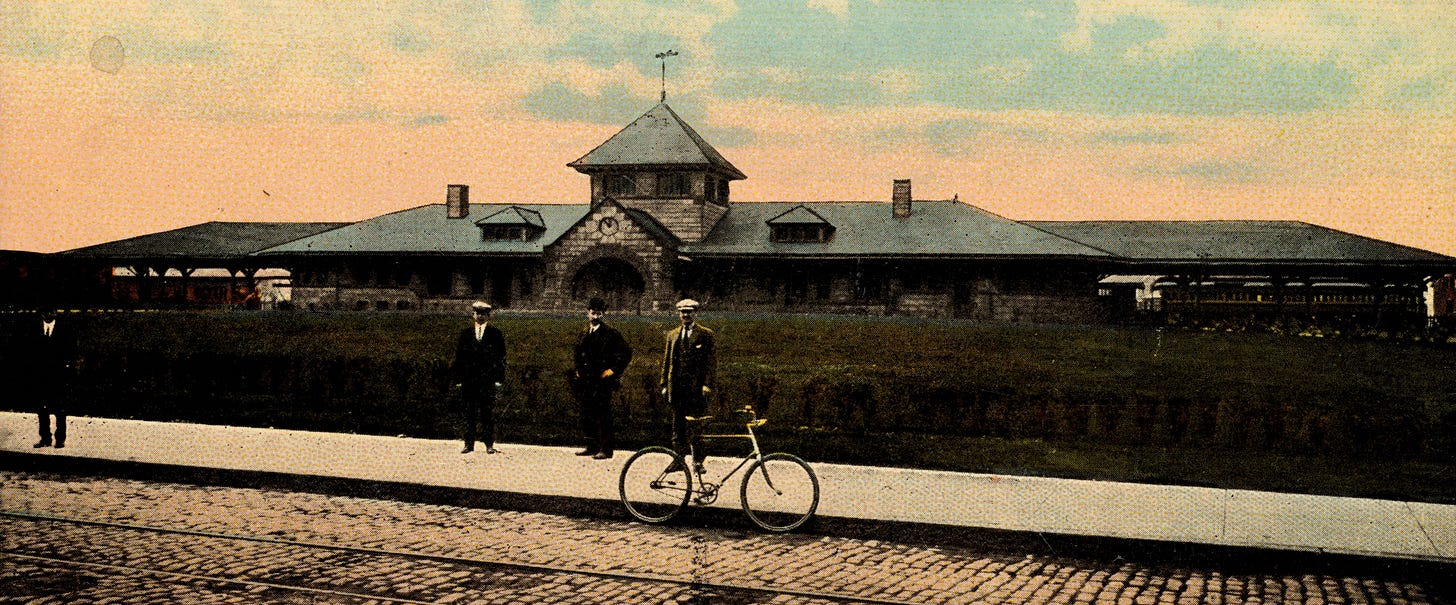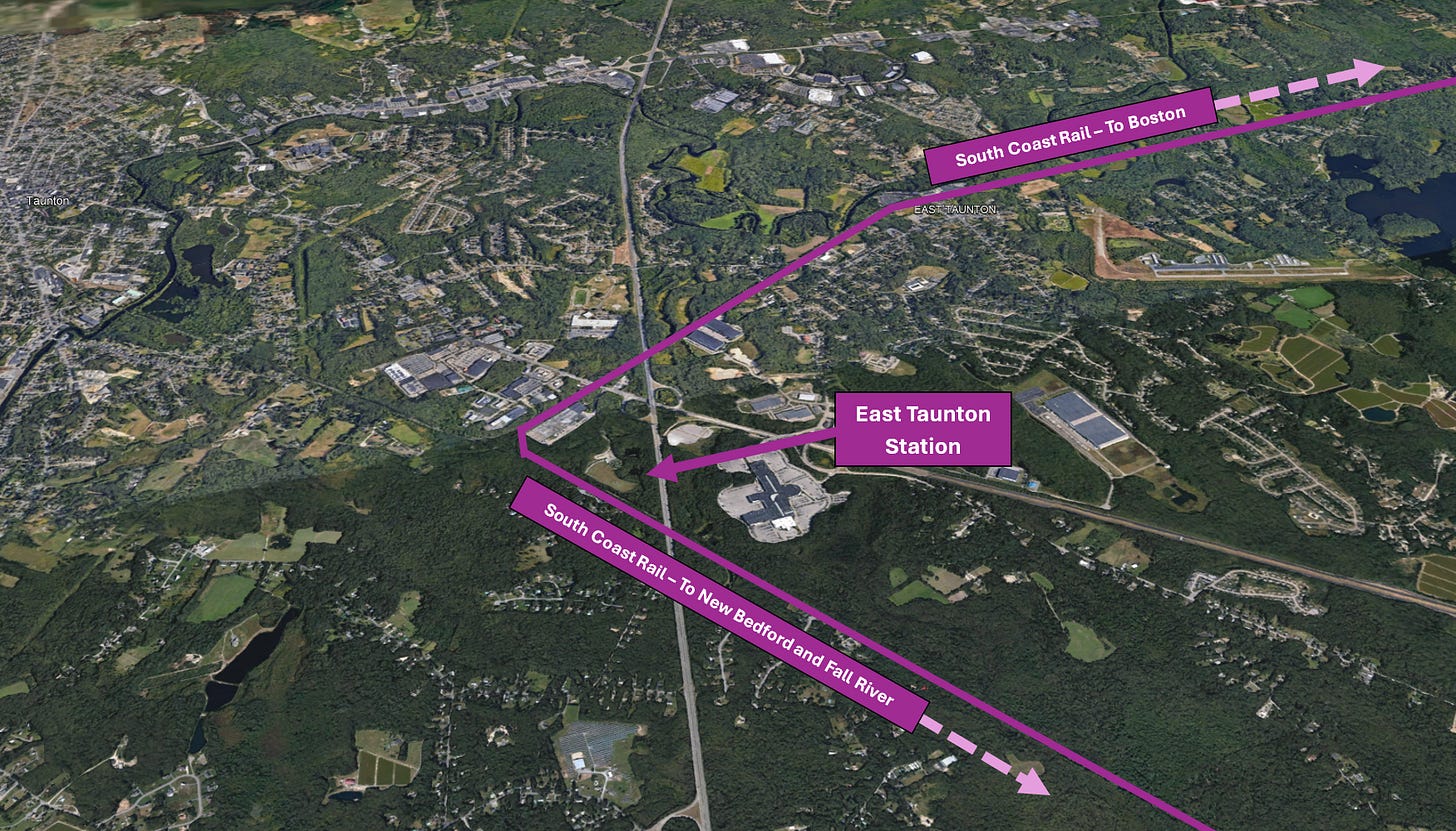Before I lament over its half-assed implementation, I think it would be good to allow some room for a little bit of excitement for how the MBTA has hammered through the South Coast Rail Project, a plan waffled over for, oh, the last thirty-five years or so. In truth, you could pick any number between ten and sixty years and you would be correct, as just about every political leader in Massachusetts since the 60’s has ‘promised’ the return of passenger rail service to the South Coast. I’m picking thirty-five years right out of the hat; the year former Governor William Weld requested the legislature allow the sale of MBTA bonds to fund studies about extending the commuter rail from Stoughton to the south coast. He would go on to proclaim a year later, rather comically, that we “Sue [him] if it doesn’t happen” by 1997.
Five governors and thirty-five~ years later and they’ve done it, maybe not the route Governor Weld wanted, but come March 23rd you’ll be able to take the train to New Bedford and Fall River for the first time since 1958.
To summarize what’s actually occurred:
the Middleborough/Lakeville Line of the MBTA’s commuter rail is being extended through Taunton, then forking into two branches: one to Fall River, and one to New Bedford. The joint-line’s new name will be the Fall River/New Bedford Line
six new high-platform ADA-compliant stops have been constructed (a new Middleborough stop replacing the old one, one in Taunton, one in Freetown, one in Fall River, and two in New Bedford)
construction of two layovers for storing trains
purchase of sixteen new bi-level coaches to accommodate the increased service (basically the same ones the Commuter Rail already uses)
the old Middleborough/Lakeville Station has been renamed Lakeville and will solely exist as a Cape Flyer train stop
as a result of the work performed to enhance the line, overall service will be greater than the original Middleborough/Lakeville Line’s service level

What this all translates to for the rider in terms of a transit-experience is as follows:
32 trains in each direction on weekdays (15 to-and-from Fall River and 17 to-and-from from New Bedford, resulting in 32 each way stopping in Taunton where both lines converge)
a ~90-minute ride from either terminus to South Station in Boston
a Boston-bound train departing either terminus every 70-minutes, resulting in a Boston-bound train departing Taunton every 35-minutes
all stops past Middleborough are Zone 8, costing $12.25 a ride to Boston
traveling between Fall River/New Bedford and Middleborough costs $2.75
in addition to the direct one-way service to and from Boston, additional local trains from East Taunton Station (before the branches fork) will be run back and forth to Fall River and New Bedford, allowing more options to connect riders with service to and from Boston.
That last point there is actually really special, as its entirely unique within the MBTA and could be applied to other branched lines (such as the Franklin/Foxboro Line or the Newburyport/Rockport Line, though there are other logistical considerations that may make that difficult). To quote General Manager Phillip Eng in the Fall River Herald News:
“There'll be trains that may not run full distance, but they could get you to a point where you could connect up with the train coming from the other way,” Eng said. For example, if someone is in Boston headed home to New Bedford, but the soonest available train goes to Fall River, they could take that train, get off at East Taunton, and board a shuttle back to New Bedford
While commuter’s desire for a one-seat ride to their destination is of course the goal, this is the next best thing by any quantifiable metric.
So, What’s The Issue Then?
Not with the MBTA, shockingly.
Like many parts of Massachusetts, the areas in question are served by woefully underfunded regional transit authorities.
Starting with the south coast, that would be the Southeastern Regional Transit Authority. The SRTA operates 23 bus routes within, between, and around the towns of Fall River and New Bedford. Additionally, the Rhode Island Public Transit Authority, or RIPTA, operates a lengthy route (the 24L) between Providence, RI and Newport, RI, with Fall River as its half-way point.
A breakdown of what this all looks like is found in the graphics below:
The first image contains a broad view of the total sum encompassing the SRTA’s bus routes, including the route of the RIPTA 24L route, and
The second graphic gives us a closer view of each metropolitan area and their respective SRTA service areas
The third pair of images gives us an even closer view of each, focusing on each towns SRTA bus hubs and routes in relation to the nearly-open South Coast Rail train stations
Focusing on the third graphic, the main takeaway would be that the majority of the bus lines don’t connect to either branch of the South Coast Rail. Fall River’s bus terminal is a 1.3 mile walk from Fall River Depot Station, and New Bedford’s is a .6 mile walk from its station. Each have at least one line that runs past the station, but that’s about it. Out-of-view in both halves of the image are the second station of each branch (Freetown Station and Church Street Station), but as you can see most clearly in the first and second graphics, the bus-connectivity is virtually nonexistent for both.
This isn’t exactly profound…but I think that is precisely why it caught me off guard; one of the largest transit projects in Massachusetts in years, and it appears that there was no planned interoperability with the local regional transit authorities to encourage ridership for themselves and for the MBTA. Everyone is merely expected to drive to the station, perpetuating the park-and-ride mentality. Fall River Depot is going to have 220 parking spots, New Bedford Station will have 352, Church Street Station will have 354, Freetown Station will have 107, and East Taunton will have 363. Cars, one-thousand three hundred and ninety-six of them.
Given this project has been actively in the works for the past six years (and envisioned for decades prior), it would seem there was very little energy put towards finding the most efficient methods for actually getting people to the stations. The SRTA did perform a study in January of 2023 and came up with three scenarios, all of which were, at their best, inadequate for the importance of the South Coast Rail lines to the state’s infrastructure. These three were:
Special bus trips from both SRTA bus terminals to their respective MBTA commuter rail stations timed around train departures/arrivals
Three new bus routes that connect high-density neighborhoods with South Coat Rail stations
Three new ‘micro-transit zones’, resulting in a handful of vehicles making special uber-esque trips to the train station
All three of these feel like patchwork-ideas haphazardly laid atop what presently exists. None of this is helped by the fact that, like many regional transit authorities, the SRTA is greatly underfunded, which is precisely why they ultimately have selected the one with the cheapest up-front cost (and also the least impact): the micro-transit plan, which is partially being paid for by a grant of $10-million from the MassDOT to a number of RTA’s.
Moving north from Fall River and New Bedford we reach East Taunton station, which is in a worse state of affairs in terms of public transit access. Whereas the New Bedford and Fall River stations are in dense urban environments, the East Taunton station is, for all intents and purposes, in the middle of nowhere with no means of getting there without a car.
Taunton is served by the Greater Attleboro Taunton Regional Transit Authority, or GATRA, another bus network not unlike the SRTA, but much more spread-out. The GATRA operates in three regions that span the areas in-and-around Attleboro, Taunton, and parts of the south shore. Let’s focus on the Taunton-area-specific routes, however. The below graphic shows those bus routes in relation to the South Coast Rail.
As can be seen, there is no present public transit method for reaching the station (though there is a bus to Attleboro Station on the Providence Line). But when I say the East Taunton is relatively in the middle of nowhere, I mean it. There is practically no way to get there without a vehicle.
There is no mention anywhere of GATRA having any sort of plan to integrate with the coming train service, even in their plans (shown below) for the $1.5-million they received from the same MassDOT grant that the SRTA received.

Given all the organizations in question are state-owned, it must be asked why the state can’t merely fund and mandate that service, stops, and terminals be rerouted or remade to fit into the mold of the South Coast Rail lines. One must forever be cognizant of the fact that public transit does not need to be profitable, it merely needs to be funded. If the SRTA does not have enough money, the state merely needs to slide it more. If the state does not have enough money to disburse, then the wealthy companies and individuals that inhabit Massachusetts should be taxed more. Same as it ever was, same as it ever was.










